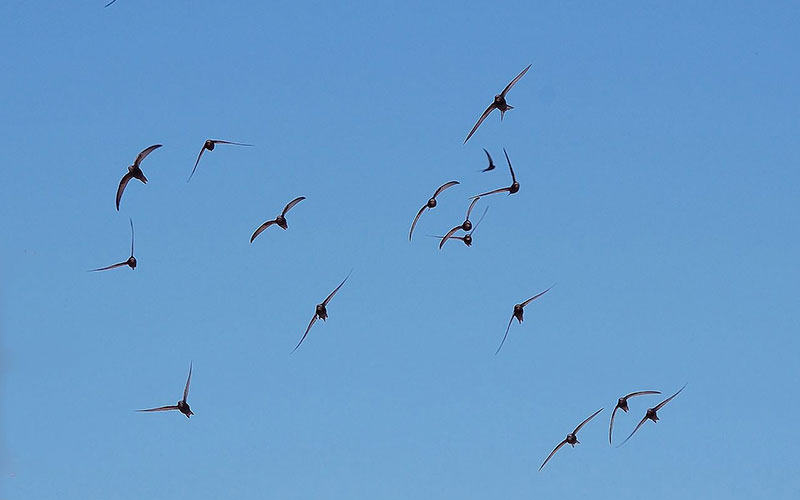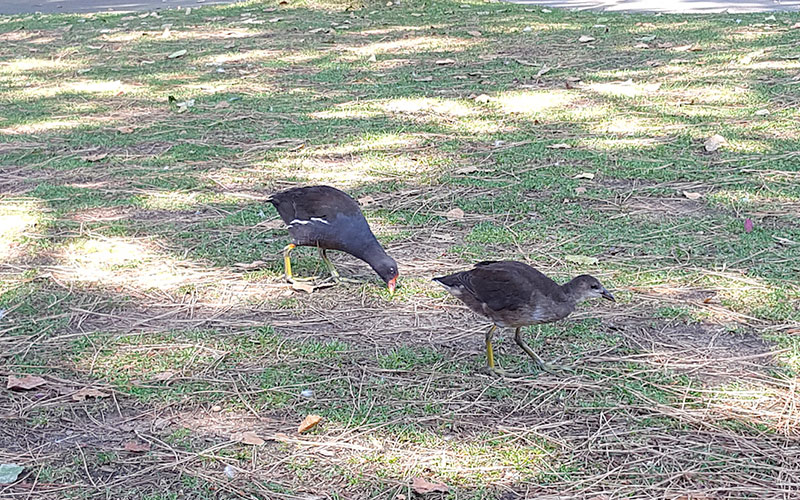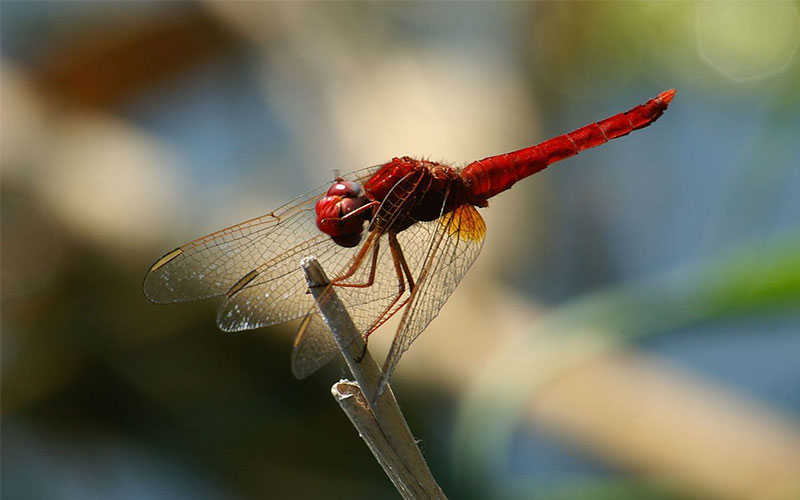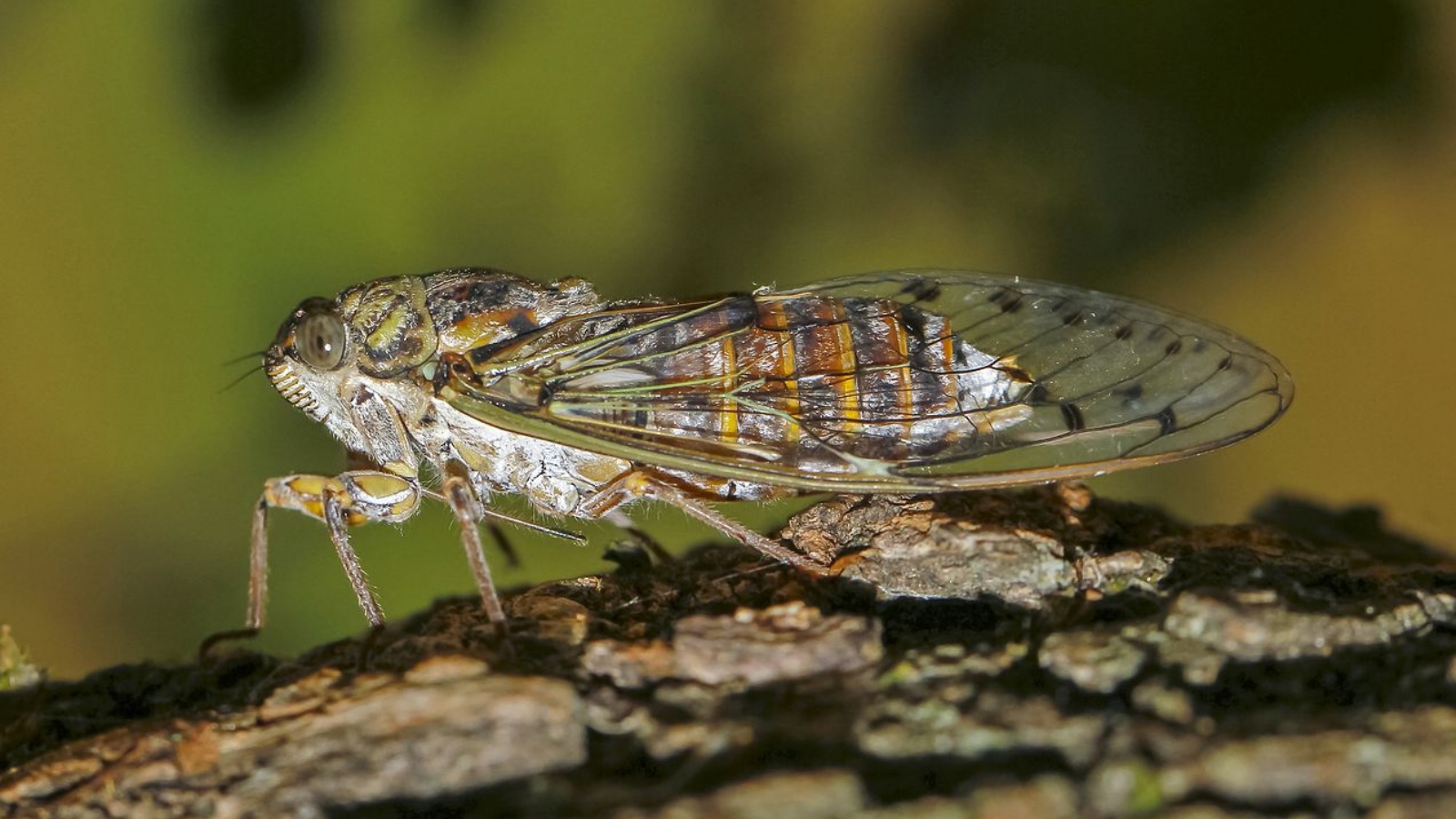Five signs of summer life to discover in the Garden in August and September
A naturalist in the Gulbenkian Garden
The heat has finally settled in the Garden and the frenetic activity of spring is a thing of the past. Nature also seems to be on vacation, lounging in the shade of the slow summer days. But it only takes slightly more attentive eyes and ears to find signs of activity. There are juvenile birds learning to be independent, male cicadas attracting females, or bats hunting for insects in the late afternoon.
Flocks of common swifts
Apus apus

On summer days, swifts flock over the trees in the Gulbenkian Garden. They are easier to spot (and hear) at dusk, both here and elsewhere in Lisbon and all around Portugal. The chicks have left the nest and are training to fly, preparing for their return to Africa, which will happen around September or October. Some of them fly up to 20,000 kilometres during their migration. Swifts spend practically their entire lives in flight – even when sleeping!
In his book As Aves do Jardim Gulbenkian, João E. Rabaça tells us that we can also find the pallid swift (Apus pallidus) in Lisbon and in other towns and cities. While it is difficult to distinguish from the common swift, it has paler plumage and a larger whitish mark beneath its beak.
Young common moorhen
Gallinula chloropus

It is the typical green feet of the moorhen that help us identify the young of this species, which can be observed on walks during the summer, even when it is very hot and nothing else in the garden seems to be moving. Unlike adult moorhens, the chicks have not yet gained other characteristics that distinguish them as a species, as they are usually brownish and lack the typical red and yellow spot on the face and beak. You see them almost always accompanied by their parents.
The symphony of the cicadas

Along with the shrill cries of the swifts, this is one of the most characteristic sounds of summer. The symphony of the cicadas can be heard during the hottest part of the day. On a walk through the Gulbenkian Garden there are countless opportunities to hear them. The sound you hear is the males contracting their muscles to make special membranes called tymbals vibrate. The females are silent. This sound serves both to attract females and to ward off predators.
In Portugal, 13 species of cicadas can be found, some quite rare, and each one producing a different sound. You can learn more about these animals with the project ‘Cicadas of Portugal – singing insects.’ This initiative was launched by a group of researchers to promote public participation in the annual monitoring of cicada populations.
Bat acrobatics

In the late afternoon, just before dark, bats fly out into the city skies. Although you can’t hear them, bats are common inhabitants of parks and gardens. Their silhouettes are unmistakable.
Look for these magnificent flying mammals by looking up into the tree canopy. You’ll know them by their acrobatic flight while they feed on tiny insects. At night, each bat can consume the equivalent of more than half its weight in such insects.
They are precious allies both in the fields and in the cities. 27 species of bat are found in Portugal.
Red jewels in the vegetation
Crocothemis erythraea

If you walk by the small ponds in the Gulbenkian Garden on sunny days, keep an eye out for scarlet dragonflies (Crocothemis erythraea). Their bright red colour contrasts with the shades of green in the vegetation and makes them easy to find.
According to Albano Soares, entomologist at Tagis, Portugal’s Centre for Butterfly Conservation, this is one of the country’s most common dragonflies. It’s a species that is very resistant to high air and water temperatures. That’s why you can look for it even during the hottest hours of the day.

